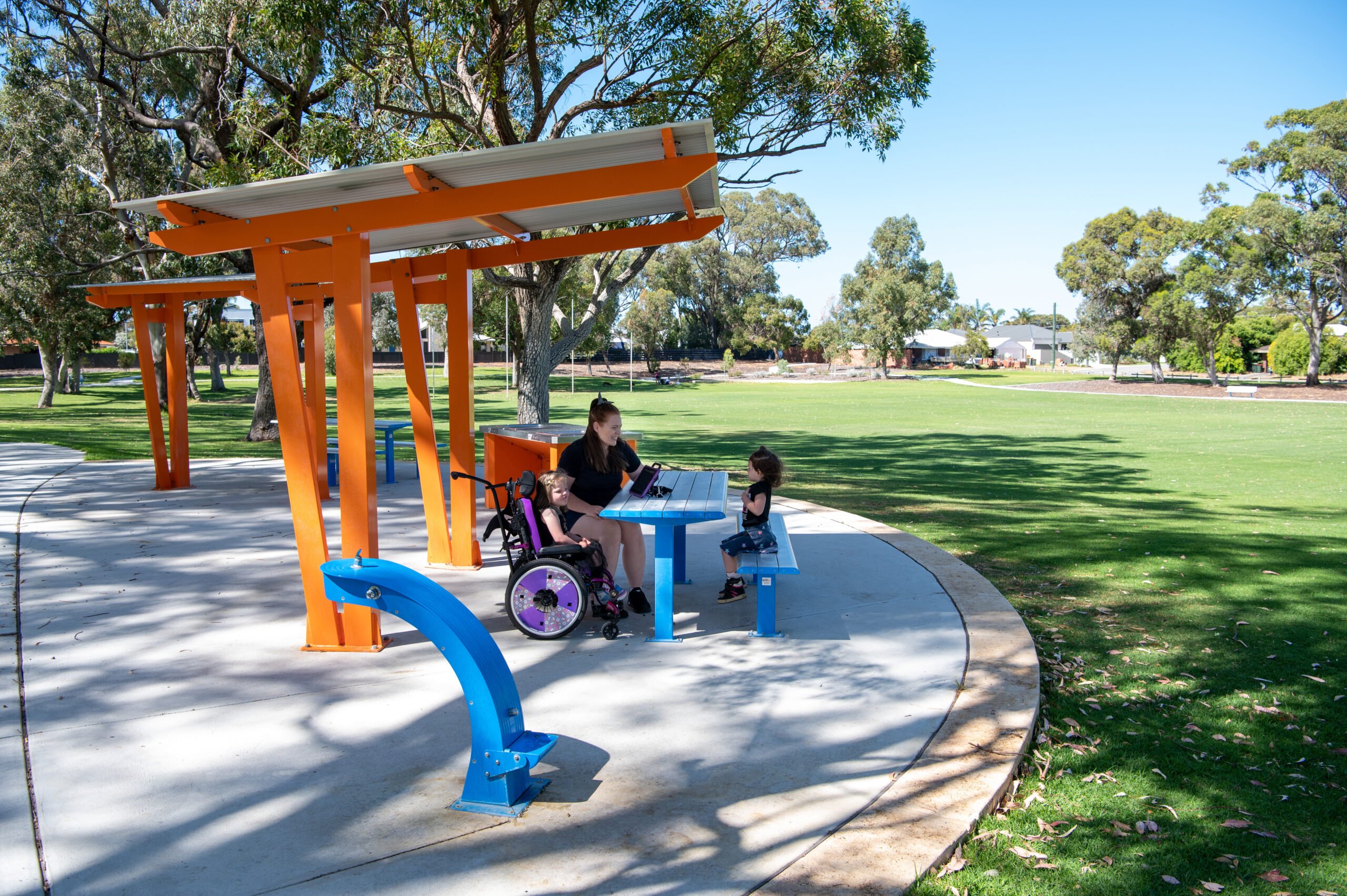May 24, 2023
Outdoor public spaces can no longer follow a one-size-fits-all approach. Australia’s diverse landscapes and rapidly evolving multicultural population demand spaces that must be functional, meaningful, sustainable, and thoughtfully designed to meet the unique needs of the communities they serve.
To achieve a return on investment and ensure these spaces attract users and visitors, they must also be visually and aesthetically appealing. Semi-customisation of street and park furniture offers a practical pathway to achieving design distinctiveness and tailored functionality without the expense of fully bespoke solutions. Let’s explore what semi-customisation is and the impact it has on landscape architecture.
GX Outdoors Acacia Shelter features a semi-custom wire roof, allowing plants to grow over and form a natural green canopy.
What’s the Difference Between Custom and Semi-Custom?
Semi-custom refers to the ability to modify an existing product design, providing a cost and time-effective solution to achieve a tailored outcome without the bespoke price tag. Semi-customisation sits somewhere between standardised off-the-shelf products and those designed from scratch to meet particular specifications.
All three options have their pros and cons, however, when there is a tension between achieving a specific design intent within a particular budget and timeframe, semi-customisation becomes particularly beneficial.
Custom laser-cut design in the GX Outdoors Pandanus Shade System, linking the Moore Park community to its iconic turtles.
How it Impacts Park Project Designs
Semi-customisation of park furniture allows Landscape Architects and Councils to create spaces that reflect local identity and celebrate cultural, historical, or environmental significance. This approach provides the flexibility to adapt existing designs to suit specific site needs, ensuring that designs are both functional and meaningful while responding to the surrounding context. Across Australia, street furniture designed with semi-custom elements is helping to shape more inclusive and engaging public environments - without the need for full custom design. At GX Outdoors, our range of street furniture, made in Australia, supports this approach by offering configurable options that enhance place-making and strengthen community connection.
Balancing Budget and Design Intent
One of the key challenges in landscape architecture is balancing budget constraints with the desire to create distinctive, engaging spaces. Research from the Australian Urban Design Research Centre shows that Australian Councils often work with limited budgets and tight timelines when designing public spaces. Semi-custom solutions streamline the design process, offering a way to achieve creative, context-sensitive outcomes without exceeding financial or time limitations. This reduces the risk of delays and budget overruns, making it easier to deliver on both design and functionality.
Custom laser-cut motif in GX Outdoors HYVE Bench Seat at Montrose Park, Morayfield, QLD, symbolising community connection and ownership in the new residential area.
The Future of Public Space Design
In an era where diversity, identity, and sustainability shape our urban environments, semi-customisation emerges as a powerful design strategy - bridging the gap between affordability and creativity. By offering flexibility without the full cost of bespoke design, it empowers Landscape Architects and Councils to craft spaces that are not only functional and visually compelling but also deeply connected to the communities they serve. As we continue to shape the future of street and park furniture in Australia, semi-custom solutions will be key in delivering inclusive, inspiring, and enduring outdoor spaces.
Need some inspiration? Take a look at some of the semi-customised solutions we’ve created for our clients here.

-2.jpg?width=697&height=400&name=Global%20Food%20Market%20District%20-%20Brisbane%2c%20Qld%20(6)-2.jpg)
.jpg?width=732&height=548&name=PI%20Pandanus%20JPEG%20(5).jpg)



 Back to News
Back to News 



